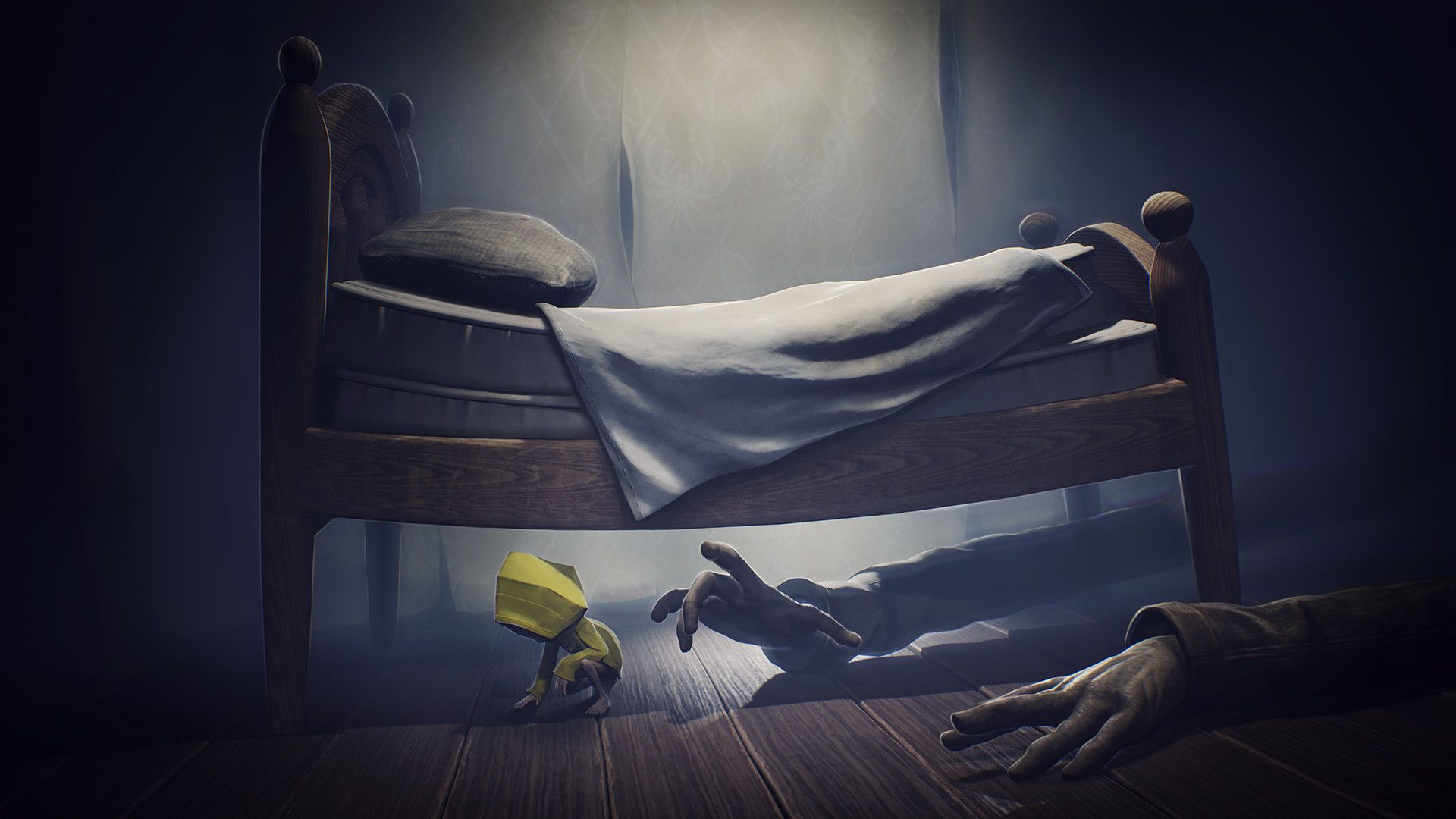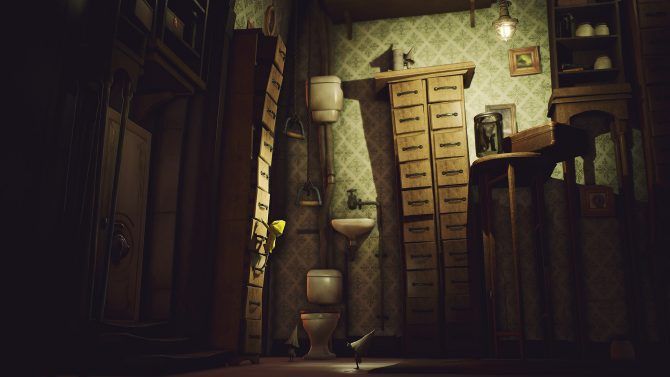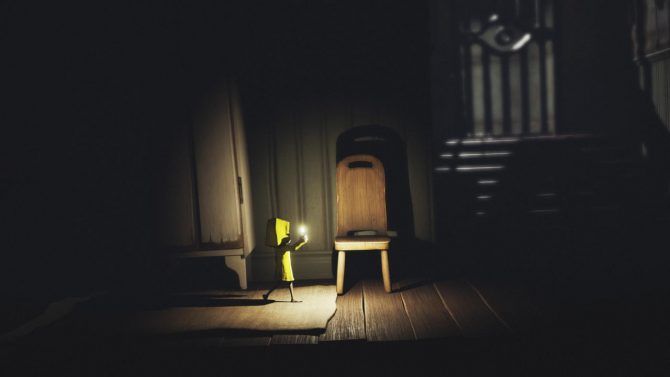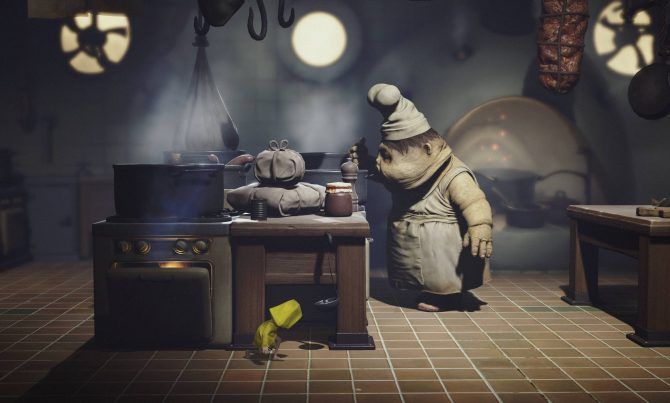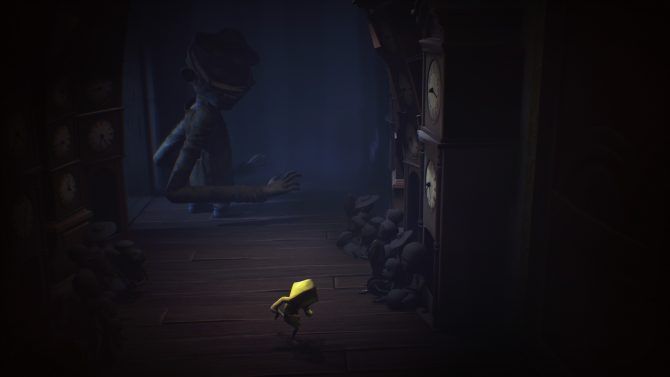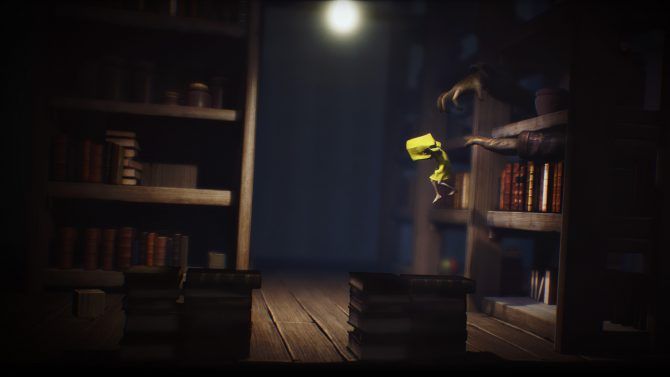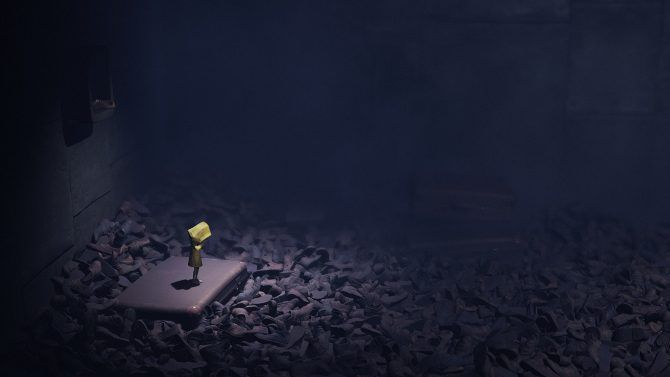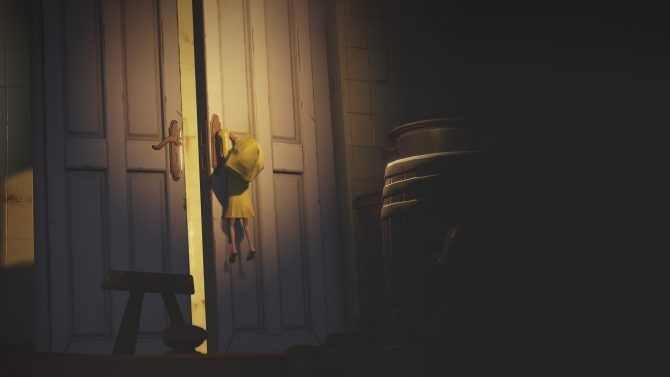Little Nightmares is a tight, atmospherically charged, and eerie experience that swallows you up at the start of the game and never quite fully spits you out even when you're done playing it. What developer Tarsier has created is more of a psychological thriller than a horror game: there is no overdone and cheap jump scares or unduly amounts of gore for the sake of gore, and better yet there are none of the usual pitfalls that make horror games predictable and trite. Rather, Little Nightmares subtly unnerves you with clever visual and audio work and chest-tightening cat-and-mouse gameplay.
I don't like being scared. Actually, let me rephrase that: I don't like mini heart attack inducing jump scares. You know, the one's that plague the horror genre? However, I do like being haunted and subtly being coerced into a state of fear and anxiety rather than having it forced out of me with a quick pop. This, in part, is why I enjoyed Little Nightmares so much. It felt like it earned the terror that progressively seeped out of me as I played it, where many games would have just gone for the shock-factor.
Put simply, Little Nightmares is a sidescrolling 2.5D hide-and-seek puzzle platformer where you guide a faceless tinsy girl (called Six) in a concealing yellow raincoat as she attempts to escape a giant and equally transfixing and menacing ocean facility called The Maw.
One of the first distinct observations you will make when playing is how small and helpless Six is compared to everything around her. Exploring The Maw evokes of aimless wonder, reminiscent of child-like exploration of touring and investigating a place you've never been before. It's scary in itself, because as you struggle to simply navigate through the facility, you know that around every corner, through every door, is danger and nightmarish obstacles. You never feel safe.
[pullquote]Little Nightmares subtly unnerves you with clever visual and audio work and chest-tightening cat-and-mouse gameplay[/pullquote]
Like a dollhouse, the front walls have been plucked away. As you make your way through the game -- bar a few cinematic occasions -- the camera is centered in on Six at a distance that promotes a feeling of urgency, but isn't too close to the point of feeling claustrophobic. I often found myself in the middle of rooms and corridors where I couldn't see the beginning or end, which greatly added to the tension level as I pushed forward into the complete unknown. You constantly feel just as diminutive as Six, and just as vulnerable to whatever horrors lie potentially ahead of you.
Notably, Six carries around a lighter that you can flick open at your leisure. It's good for lighting up some of the wet and darker areas of the game, like cramped crawl spaces. However, more often than not I found myself enduring the darkness and the hazards that potentially could fall upon me within it rather than turn on the lighter which casted long, twisting shadows and distorted things in spine-chilling ways.
As a young kid I would travel with a flashlight if it was dark. Despite the casted light sometimes morphing ordinary objects into things of shadowy terror, it was better than tip-toeing through uncertainty. However, in Little Nightmares, the menacing shadows aren't of your mum's elliptical bike, but of some demented, monster-human thing trying to kill you. Alas, I didn't use the lighter much, a credit to the magic done with lighting in the game.
What makes this journey for freedom as terrifying as it proves to be is the cast of nightmarish and deformed monstrosities you will have to evade, tread carefully around, and sometimes desperately sprint through. At the center of the game's most harrowing moments are these monstrosities, and in these moments are some of the most tense experiences I've endured in quite some time.
You have a blind caretaker who unsettlingly sniffs you out and uses his long, deformed arms that juxtapose the rest of his body to feel his way towards where you are. You also have lumpish, utterly grotesque twin butchers who look like pottery projects of kindergartners. And while these are the adversaries you will spend the most time evading, there a few others as well that are equally scary, but are best left unspoiled. After all, some of the value in encountering these "creatures" is the horrid shock that knocks you back -- the "oh fuck no" moment, of first witnessing them.
Little Nightmares isn't so much of a stealth game, as a game of cat-and-mouse and outwitting your pursuer. Just as you can't muscle your way through the game, you can't stealth your way through either.
That being said, there are moments that are stealth-heavy. Sometimes you will need to cautiously and meticulously make your through, around, up, and down a room to solve a puzzle underneath the noses of those you are trying to evade. In these stealth parts there is often less emphasis on being crafty, and more emphasis on being patient. If you try to hurry through any of the part of the game: you will be caught.
It is also in these moments of stealth, where your breathing stops, you closely listen for footsteps, and Six's heart starts racing that create for some incredibly tense sequences: because that moment of being spotted or deduced very quickly spills over into terrifying and startling chaos. And chaos is not your friend in this game: where your pursuers are bigger and quicker than you, and where you have absolutely no clue where you're going -- but they do.
Luckily, in this cat-and-mouse struggle, you're the one with nine lives. And you will need them, because there is a level of trial and error to some of the obstacles/puzzles in the game, which will leave you dead quite a few times. Thankfully, load times are brisk enough, and checkpoints are decently fair-ish.
You will also die (too often) due to the game's sometimes clunky 2.5D nature. Every character, including Six, has a level of solidity and weight, which combined with the 2.5D design makes moments of precision platforming quite vexing. If you jump at the wrong angle, or are unawaringly a little too much to the right of left, you will either end up caught and dead or falling into an abyss and dead. No matter what: you (rather unfairly) are dead.
Clunkiness further spills over into controlling Six herself, specifically when you have to grab stuff in the game. Little Nightmares is paced brilliantly, with the puzzles slowing you in your tracks just enough without ever frustratingly stopping the flow of the game. What does break this flow -- and led to multiple different animated grumbles born out of exasperation -- is sometimes, no matter how hard you try, you can't quite get Six to grab a hold of a chair or the top of a bookshelf the way you want to. For most of the game this is nothing more than a slight annoyance, but during other parts where you need to move quickly and grab with more precision, this became aggravating to the point of requiring a few too many deep breaths.
While playing through Little Nightmares, it's difficult to not draw comparisons to games like Inside from developer Playdead. Both are puzzle platformers. Both also contain a repulsive tone, an oppressive atmosphere, a small and helpless protagonist escaping a strange and dangerous world, and both approach horror in the same way: not with a smack across the face but with a subtle finger down the back of the neck.
[pullquote]Some of the most tense-filled experiences I've endured in quite some time.[/pullquote]
Both games drop you in without a single bit of backstory of who you are, where you are, or what you're doing. Both slowly drip information as you progress through obtuse and missable environmental storytelling. Both constantly sit you down in a state of perplexity. Both offer up metamorphic and mystifying stories. And both leave you with a lingering feeling of uneasiness about what you just experienced.
Normally wordless stories and storytelling don't leave me fully satisfied as a person who values story and narrative above everything else. However, Little Nightmares -- like Inside -- slowly fed me enough of an intriguing story while also never revealing too much to keep me constantly hungry for more throughout the game, even after I finished it.
Little Nightmares is a beautifully creepy game, much thanks to the masterful lighting, exquisite attention to detail, and inspired art design. Interacting within the world is also a very pleasant experience: whether that is strugglingly dragging a chair across the room to use as a boost to jump onto a door knob or climbing a tower of dishes. Not only do these actions look good thanks to stellar animation, but they simply are a joy to do, despite being mundane tasks in nature.
As with any game that features horror elements: use a pair of good headphones. If you don't have a good pair of headphones: go buy a pair for this game. Like the rest of the game, it's evident that Tarsier paid incredible attention to bringing the game to life audibly: whether that's the creaking of tip-toeing across old creaky boards or the far-away grumblings of an enemy. The game simply is a superior experience when you can crisply hear the horrors aboard The Maw.
Unfortunately, the experience of Little Nightmares is let down by an anti-climatic ending. From the start to 4/5 mark, the game slowly builds momentum, and develops a trance-like flow over its six hour experience. All of it builds towards what you feel like is going to be an eventful ending: where the game's abstruse story peels back to a revelatory spectacle that will serve as the creepiest and best moment yet.
Sadly, that revelation, that moment, never surfaces, and the ending comes and goes in a rather unmemorable way and also simply leaves one too many questions still unresolved. In a game like this, where it is all about the experience from start to finish, to stick the landing is crucial. Alas, Tarsier doesn't stick the landing, in fact, it doesn't really even get close. The ending isn't horrible -- far from it -- but is simply disappointing given the build-up in the prior five and a half hours.
Little Nightmares is a genuinely unnerving and eerie experience that never cheaply earns its thrills and scares. Despite an anti-climactic ending and some maladroit platforming sequences, Tarsier Studios successfully delivers a unique, memorable, and incredibly tense experience.
Little Nightmares
- Platform(s)
- Switch, PS4, PC, Stadia, Xbox One
- Developer(s)
- Tarsier Studios
- Publisher(s)
- Bandai Namco Entertainment
- Genre(s)
- Survival Horror, Puzzle, Platformer

